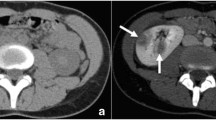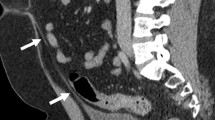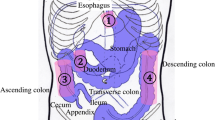Abstract.
The aim of the study was to evaluate the role of MR urography (MRU) in the diagnosis of obstructive uropathy in selected groups of patients. The groups involved following pathologies: calculi; strictures of ureteropelvic junction (UPJ); benign and malignancy-induced ureterostenosis. Sixty patients with clinical diagnosis of obstructive uropathy were subjected to static fluid MRU (sMRU) with the use of 3D turbo spin echo (TSE) sequence in a 0.5-T magnet. The examination was completed with conventional MR sequences and in 12 cases additionally with sequences after the administration of Gd-DTPA and excretory MRU. The results were compared with intravenous urography (IVU), CT, US, clinical and histopathological data. The degree of the urinary tract dilatation as well as the level and type of obstruction were estimated. In patients with urolithiasis sMRU correctly depicted the degree of ureterohydronephrosis in 85%, in cases of UPJ stenosis and malignancy-induced ureterostenosis in 100% and in the group of benign ureterostenosis in 91% of patients. Determination of obstruction level in patients with stones was adequate in 92% and in cases of non-calculous ureteral strictures in 100% of patients. The sMRU sequence alone could not specify the nature of obstruction except 1 case of bladder carcinoma. Filling defects in ureters visible on MR urograms were verified with IVU or CT to exclude intrinsic tumours. Completed with conventional MR sequences sMRU enabled the depiction of solid mass or infiltration in 83% cases of malignancy-induced ureterostenosis, and in the remaining groups of patients neoplastic process was excluded in 91%. In conjunction with excretory MRU and conventional MR images sMRU appears to be a highly useful technique in assessment of obstructive uropathy, especially that of non-calculous origin. Among different clinical applications MRU is superior in the evaluation of dilated urinary tract in altered anatomical conditions (e.g. in patients with ileal neobladder).
Similar content being viewed by others
Author information
Authors and Affiliations
Additional information
Electronic Publication
Rights and permissions
About this article
Cite this article
Zielonko, .J., Studniarek, .M. & Markuszewski, .M. MR urography of obstructive uropathy: diagnostic value of the method in selected clinical groups. Eur Radiol 13, 802–809 (2003). https://doi.org/10.1007/s00330-002-1550-8
Received:
Revised:
Accepted:
Issue Date:
DOI: https://doi.org/10.1007/s00330-002-1550-8




